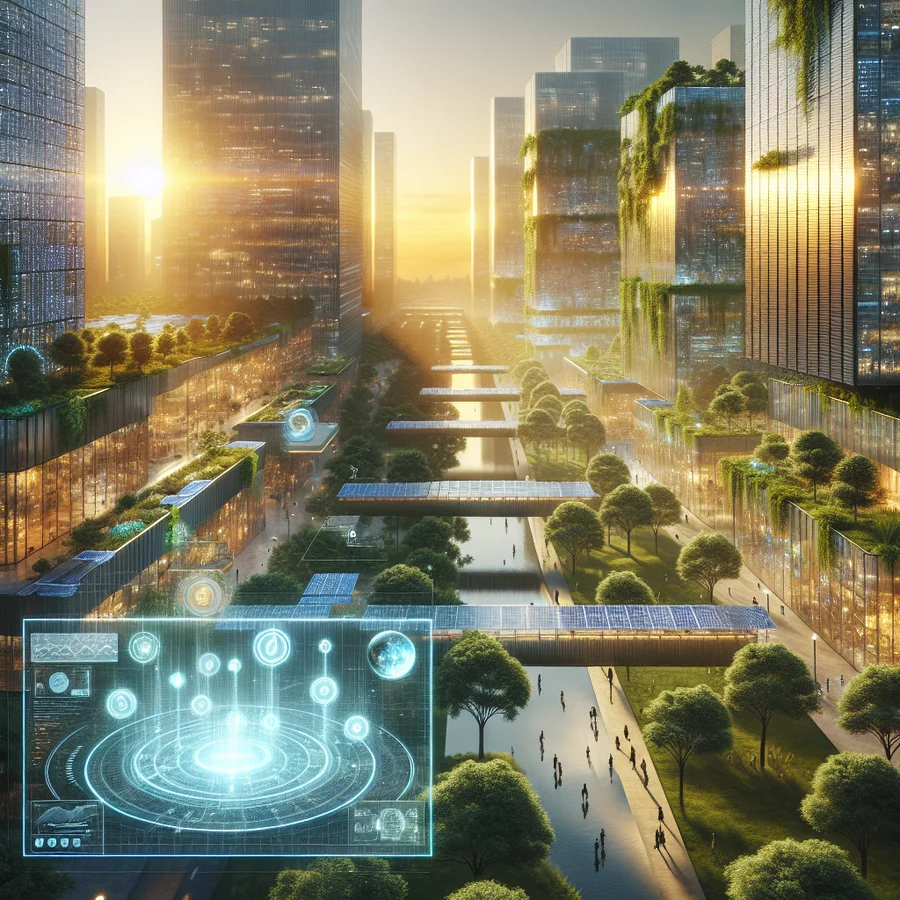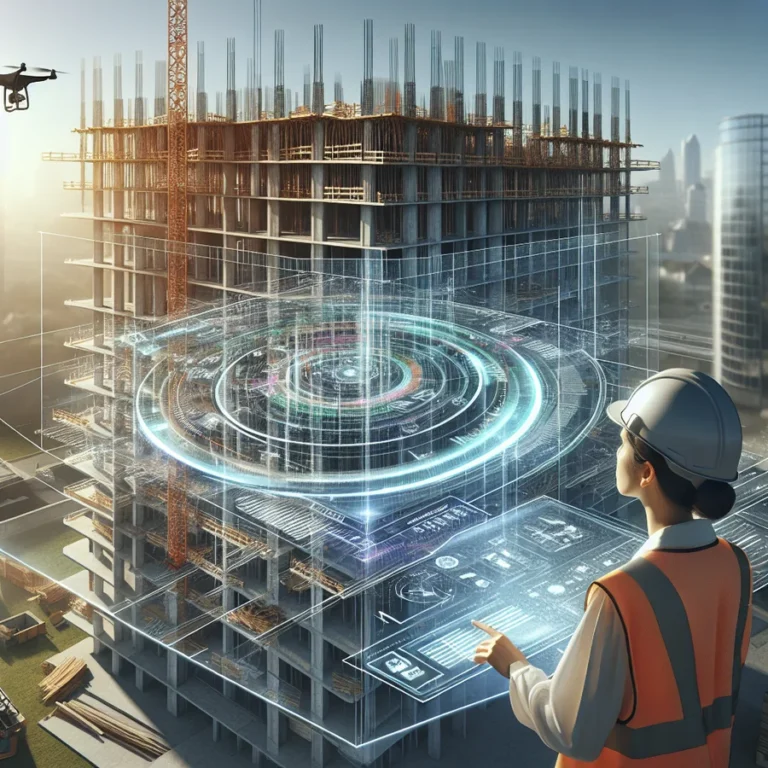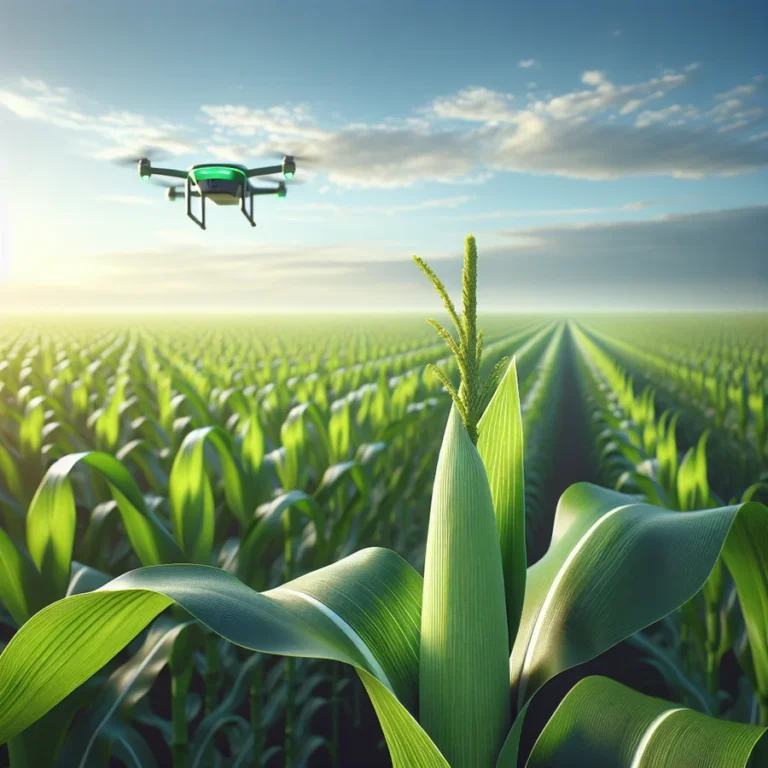AI in Urban Planning: Designing Smart and Sustainable Cities
Imagine cities designed not just for today, but for a sustainable future. AI in urban planning is making this vision a reality. It’s about using smart technology to build better, more livable cities for everyone.
This guide explores how artificial intelligence is revolutionizing urban development. We’ll look at practical applications, benefits, and challenges. Get ready to discover how AI is shaping the cities of tomorrow, today.
The Rise of AI in Urban Planning
Cities are facing unprecedented challenges. Population growth, climate change, and aging infrastructure demand innovative solutions. AI in urban planning offers a powerful toolkit to address these issues effectively.
AI isn’t just about fancy algorithms. It’s about using data to make smarter decisions. It helps us understand complex urban systems and create more sustainable and resilient cities.
What is AI, Exactly?
Let’s break down what we mean by AI. Artificial intelligence refers to the ability of computers to perform tasks that typically require human intelligence. This includes learning, problem-solving, and decision-making.
In urban planning, AI uses algorithms and models to analyze data, predict trends, and optimize urban processes. Think of it as a super-powered assistant for city planners.
Why is AI Important for Urban Development?
Traditional urban planning methods often struggle with the complexity of modern cities. AI provides the tools to:
- Analyze vast datasets: AI can process huge amounts of data from various sources to identify patterns and trends.
- Predict future outcomes: AI models can simulate different scenarios to forecast the impact of planning decisions.
- Optimize resource allocation: AI can help cities use resources more efficiently, reducing waste and costs.
- Enhance citizen engagement: AI-powered tools can facilitate communication between planners and the community.
In essence, AI helps create cities that are more efficient, sustainable, and responsive to the needs of their citizens. This is a game-changer for urban development.
Key Applications of AI in Urban Planning
AI is transforming various aspects of urban planning. Let’s explore some key applications where AI is making a significant impact.
AI for Urban Design and Morphology
AI in urban planning is revolutionizing how cities are designed. It allows planners to analyze urban forms and create more efficient and livable spaces.
One exciting development is the use of AI to generate urban plans that outperform human planners. For example, researchers at Tsinghua University in China developed an AI system that designs urban layouts based on the “15-minute city” concept. This concept focuses on creating neighborhoods where residents can access all essential services within a 15-minute walk or bike ride.
Note: The “15-minute city” concept aims to improve quality of life by reducing commute times and promoting local economies.
Another innovative tool is Digital Blue Foam’s “Urban Insights.” This tool rapidly prototypes urban scenarios by assimilating data from various open sources. It allows project teams to compare the quality of different locations and make informed decisions.
Digital Twins: Simulating the Future City
Digital twins are virtual representations of physical assets or systems. In urban planning, digital twins allow planners to simulate and test modifications to the urban landscape before implementation.
Reminder: Digital twins consist of visualization, prediction, and diagnosis components.
Companies like BuildMedia (developing a digital twin of Wellington, New Zealand) and 51World (creating a digital twin of Shanghai) are leading the way in this field. Digital twins offer a careful approach to urban planning, minimizing stagnation and ensuring continuous progress.
AI for Infrastructure Planning
Efficient infrastructure is the backbone of any successful city. AI in urban planning helps optimize infrastructure development and management.
For example, aerial mapping combined with AI can address the challenge of informal settlements. In Colombia, the National Planning Department (DNP) implemented a pilot project that uses aerial mapping with urban diagnostics to identify and prioritize areas requiring public policies for space improvement.
The project’s success led to the creation of MAIIA (Automated Mapping of Informal Settlements with Artificial Intelligence), an open-source tool that facilitates the automated detection and mapping of informal settlements.
AI for Resilience and Climate Adaptation
Cities are increasingly vulnerable to the impacts of climate change. AI in urban planning can enhance resilience against extreme weather events.
Google’s “Tree Canopy” tool, powered by AI, helps urban planners mitigate the impact of extreme heat waves. It combines AI with aerial images to understand tree coverage and plan new tree plantations effectively.
IBM researchers have also developed a process to accurately identify, map, and measure the amount of carbon that trees can store. This helps cities incorporate vegetation effectively within urban centers.
AI for Community Engagement
Engaging the community is crucial for successful urban planning. AI-powered tools can facilitate communication between planners and residents.
Virtual reality (VR) and augmented reality (AR) applications allow residents to visualize proposed changes and provide feedback. This promotes a more participatory planning process.
AI can also enhance the monitoring and analysis of data related to mobility and safety. Some initiatives use user-generated data to determine safe routes and monitor public spaces for potential threats to pedestrian safety. There are even applications focused on urban safety for women that use AI to gather information from users and indicate whether a particular route is considered safe or not.
Benefits of AI-Driven Urban Planning
The integration of AI in urban planning offers numerous benefits. Let’s explore some of the most significant advantages.
- Improved Efficiency: AI optimizes resource allocation and streamlines urban processes.
- Enhanced Sustainability: AI promotes green infrastructure and reduces carbon footprints.
- Increased Resilience: AI helps cities adapt to climate change and other challenges.
- Better Quality of Life: AI creates more livable cities with better access to amenities and efficient transportation.
- Data-Driven Decision Making: AI provides insights that inform planning decisions and improve outcomes.
These benefits demonstrate the transformative potential of AI in creating smarter and more sustainable cities.
Optimized Land Use Planning with AI
AI in urban planning enables smarter land use through:
- Smart Zoning: AI analyzes geographic, demographic, and environmental data to propose zoning plans that optimize land use. This balances residential, commercial, and industrial areas while preserving green spaces.
- Mixed-Use Development: AI identifies opportunities for mixed-use developments that reduce commuting distances, promote walkability, and enhance urban vibrancy.
These strategies create more efficient and sustainable urban environments.
Green Architecture and Infrastructure with AI
AI contributes to green architecture and infrastructure by:
- Energy-Efficient Buildings: AI designs buildings with optimized energy efficiency, considering factors such as orientation, materials, and insulation.
- Sustainable Infrastructure: AI creates infrastructure plans that incorporate renewable energy sources, efficient water management systems, and sustainable waste disposal methods.
These innovations significantly reduce energy consumption and carbon footprints.
Dynamic Urban Ecosystems with AI
AI helps create dynamic urban ecosystems through:
- Adaptive Green Spaces: AI designs parks and green spaces that adapt to changing environmental conditions, supporting biodiversity and providing recreational areas.
- Urban Agriculture: AI identifies suitable locations for urban farms and community gardens, promoting local food production and enhancing food security.
These ecosystems enhance the livability and sustainability of cities.
Improved Transportation and Mobility with AI
AI in urban planning revolutionizes transportation and mobility by:
- Efficient Public Transit: AI optimizes public transportation networks to ensure efficient, accessible, and eco-friendly mobility options.
- Smart Traffic Management: AI develops traffic management systems that reduce congestion, lower pollution levels, and improve overall transportation efficiency.
These improvements make cities more accessible and reduce environmental impact.
Challenges and Considerations for AI in Urban Planning
Despite its potential, the integration of AI in urban planning faces several challenges. Addressing these challenges is crucial for responsible and inclusive AI implementation.
Data Scarcity and Quality
The successful application of AI relies on accurate and comprehensive data. However, acquiring such data can be challenging due to privacy issues or incomplete datasets.
Cities need to invest in data collection and management strategies to ensure that AI models have access to high-quality data.
Ethical Concerns and Bias
AI algorithms can perpetuate existing biases if they are trained on biased data. This can lead to unfair or discriminatory outcomes.
It’s essential to develop AI systems that are fair, transparent, and accountable. This requires careful attention to data collection, algorithm design, and model evaluation.
Data Privacy and Security
The use of AI in urban planning raises concerns about data privacy and security. Cities need to implement robust data protection measures to safeguard citizens’ personal information.
This includes anonymization techniques, secure data storage, and transparent data usage policies.
The Digital/AI Divide
Not everyone has equal access to technology and digital skills. This can create a digital/AI divide, where some communities are excluded from the benefits of AI-driven urban planning.
Cities need to address this divide by providing digital literacy training and ensuring that AI tools are accessible to all residents.
Collaboration and Governance
Effective implementation of AI in urban planning requires collaboration among urban planners, policymakers, technologists, and the community. It also requires clear governance structures to ensure that AI solutions are implemented responsibly and inclusively.
Examples of AI in Urban Development
Several cities and organizations are already using AI to improve urban planning. Here are some notable examples.
UrbanSim
UrbanSim is an open-source simulation platform that uses generative AI to model and simulate urban growth and development. It combines data on demographics, land use, transportation, and economics to generate realistic scenarios for urban planning.
Google’s DeepMind for Cooling Data Centers
Google’s DeepMind implemented a generative AI system to optimize the cooling of their data centers. By analyzing vast amounts of data on energy consumption, temperature, and other variables, the AI system autonomously learned to control cooling systems more efficiently. This resulted in significant energy savings and reduced environmental impact.
Singapore’s Virtual Singapore
Virtual Singapore is a digital twin of the city-state created using generative AI. It combines data from multiple sources, including sensors, satellite imagery, and social media, to create a dynamic model of the city. This allows urban planners and policymakers to simulate and visualize various urban development scenarios, including energy consumption, traffic management, and environmental impacts, to make informed decisions for sustainable development.
Generative Design for Architecture
In architecture, generative AI is being used to design sustainable and energy-efficient buildings. For example, the Shanghai Tower utilized generative design algorithms to optimize its shape for wind resistance and natural lighting. The result is a building that reduces energy consumption and enhances occupant comfort while minimizing its environmental footprint.
The CityBrain in Hangzhou
Hangzhou, a city in China, implemented a generative AI system called CityBrain to manage traffic congestion and improve transportation efficiency. CityBrain collects data from various sources, including traffic cameras, GPS systems, and public transportation, to optimize traffic signal timings and reroute vehicles in real time. This has resulted in reduced travel times, improved air quality, and enhanced overall mobility within the city.
The Future of AI in Urban Planning
The future of AI in urban planning is bright. As AI technology continues to evolve, we can expect even more innovative applications that transform the way cities are designed and managed.
Some potential future developments include:
- More sophisticated AI models: AI models will become more accurate and capable of handling complex urban challenges.
- Increased automation: AI will automate more urban planning tasks, freeing up planners to focus on strategic decision-making.
- Greater citizen participation: AI-powered tools will make it easier for citizens to participate in the planning process.
- Smart and sustainable infrastructure: AI will optimize the design and management of infrastructure, creating more sustainable and resilient cities.
The key to unlocking the full potential of AI in urban planning is to address the challenges and considerations discussed earlier. By doing so, we can create cities that are not only smart but also equitable, sustainable, and livable for all.
AI-Driven Urban Planning Education
As AI in urban planning becomes more prevalent, education in this area is also evolving. Here are some key trends:
- Development of AI-focused curricula and specialized courses for urban studies.
- Innovative pedagogy incorporating interactive textbooks, simulations, and AI tools.
- Adaptive assessment methods that account for the influence of generative AI on student work.
These educational advancements will prepare the next generation of urban planners to effectively leverage AI in their work.
Conclusion
AI in urban planning is no longer a futuristic concept. It’s a present-day reality that is transforming cities around the world. By leveraging the power of AI, we can create cities that are more efficient, sustainable, and responsive to the needs of their citizens.
While challenges remain, the potential benefits of AI in urban planning are too significant to ignore. By embracing AI and addressing its challenges, we can build a brighter, more sustainable future for our cities and communities.
FAQs about AI in Urban Planning
What is AI in urban planning?
AI in urban planning involves using artificial intelligence technologies to analyze data, predict trends, and optimize urban processes, leading to more efficient, sustainable, and livable cities.
How does AI improve urban design?
AI improves urban design by analyzing urban forms, generating optimal layouts, and creating digital twins for simulating and testing urban modifications before implementation.
What are the benefits of using AI in urban planning?
The benefits include improved efficiency, enhanced sustainability, increased resilience, better quality of life, and data-driven decision-making.
What are the challenges of implementing AI in urban planning?
Challenges include data scarcity and quality, ethical concerns and bias, data privacy and security, the digital/AI divide, and the need for collaboration and governance.
Can AI help with climate adaptation in cities?
Yes, AI can enhance resilience against extreme weather events through predictive modeling, risk assessment, and tools like Google’s “Tree Canopy,” which helps plan new tree plantations.
How can AI enhance community engagement in urban planning?
AI-powered tools, such as VR and AR applications, facilitate communication between planners and residents, allowing residents to visualize proposed changes and provide feedback.
What is a digital twin in the context of urban planning?
A digital twin is a virtual representation of a physical asset or system. In urban planning, digital twins allow planners to simulate and test modifications to the urban landscape before implementation.
What are some examples of cities using AI in urban planning?
Examples include Singapore with its Virtual Singapore project, Hangzhou with its CityBrain system for traffic management, and various cities using UrbanSim for simulating urban growth.
How does AI contribute to sustainable infrastructure?
AI contributes to sustainable infrastructure by creating plans that incorporate renewable energy sources, efficient water management systems, and sustainable waste disposal methods.
What is the role of data in AI-driven urban planning?
Data is crucial for AI in urban planning. AI algorithms analyze vast datasets to identify patterns, predict trends, and optimize urban processes, enabling data-driven decision-making.






